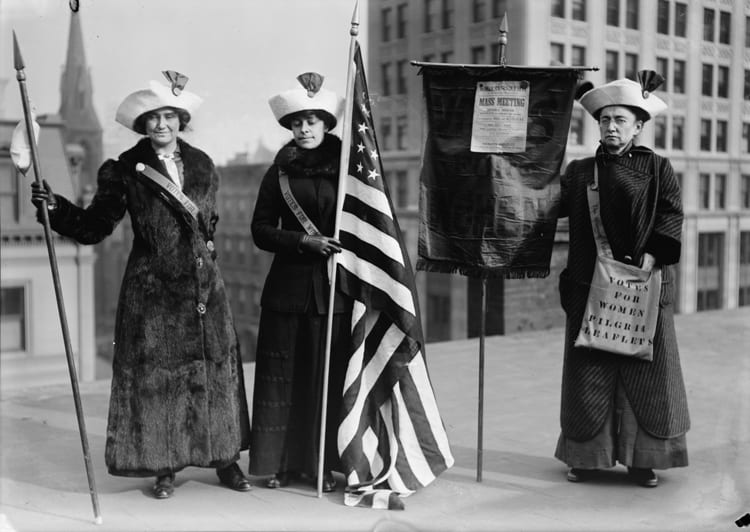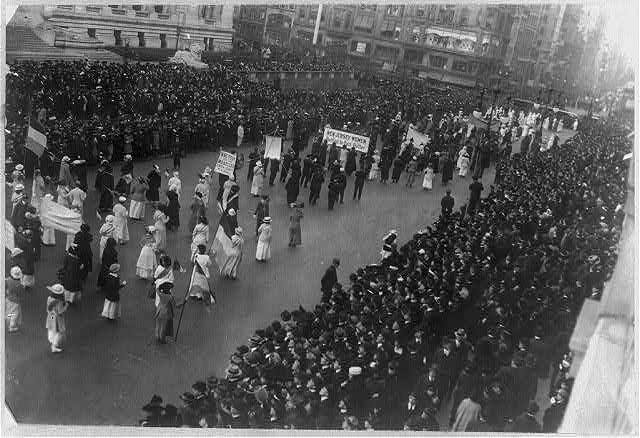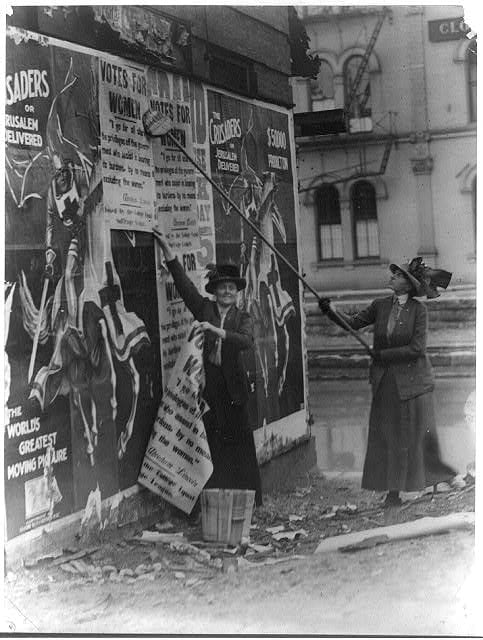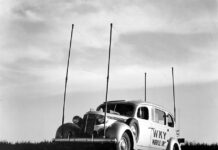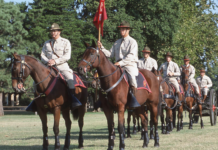August marks the centennial of universal suffrage in the United States and Oklahoma was significant player in the push to give women the right to vote.
Two years before all distaff Americans could cast full ballots, Oklahoma became the 21st state to grant women unlimited suffrage, for which many had fought since pre-statehood days. Often forgotten is that the battle for voting rights in the Sooner State had to overcome sexism and racism.
In 1890, the Woman’s Christian Temperance Union lobbied legislators in Oklahoma Territory for the right to vote in school elections, says Jennifer Holland, assistant professor of history at the University of Oklahoma. Those early feminists succeeded a few years later and that limited right to vote continued after statehood in 1907.
“Activists really thought full suffrage would pass and it would get into the Oklahoma constitution,” Holland says. “But it failed because of race. Anti-suffragists convinced a number of people that the radical notion of letting women vote would mean that black women, not white women, would turn out in higher numbers because white women were still seen as too gentle to vote. Black women, in the racist ideology of the time, weren’t seen as demure and would go vote.”
The national suffrage movement bet on progressive-minded western territories to approve universal suffrage because it was easier to do so legislatively than through a statewide referendum, Holland says.
“I often pitch the Oklahoma suffrage movement as a little bit western and little bit southern,” she says. “So much of the country didn’t give women the right to vote. Oklahoma is part of that progressive spirit of the west. It was southern in that issues about black voting hung so heavy during these campaigns. Segregation, with Jim Crow laws, was an official part of the statehood platform. It’s clear this was a political story.”
Holland links the women’s movement with the state’s early progressive and pro-labor leanings, which often turned radical before World War I.
“Oklahoma was a cauldron of radical politics; you see that in the Green Corn Rebellion,” she says. “You had these great hopes for upward mobility because Oklahoma was the last hope in many ways. Activists finally got statehood and had to fight corporations and drought. They checked corporate greed and got politics closer to the people to make everything better.
“So many suffrage activists of that era used the argument that women are different from men and what society needs are womanly characteristics of nurturing and caring for others. They would clean up politics. That fit with the progressive politics of the time.”
Holland says the suffrage movement in Oklahoma was unique because it was poly-racial.
“At the Sequoyah Convention [when Indian Territory was being considered as a separate state], they tried to get suffrage and were promised they would,” she says. “A lot of Native women worked for suffrage in organizations with white women. Black women had to work in separate organizations but doing so in parallel with the other groups. Black women were serious about this vote because they saw it as embracing citizenship and improving the status of black people.”
Holland says the suffrage struggle is complicated and “there’s not just one take-away. There are parts of hope and empowerment, but stories of oppression wrapped up in it, too.”






















